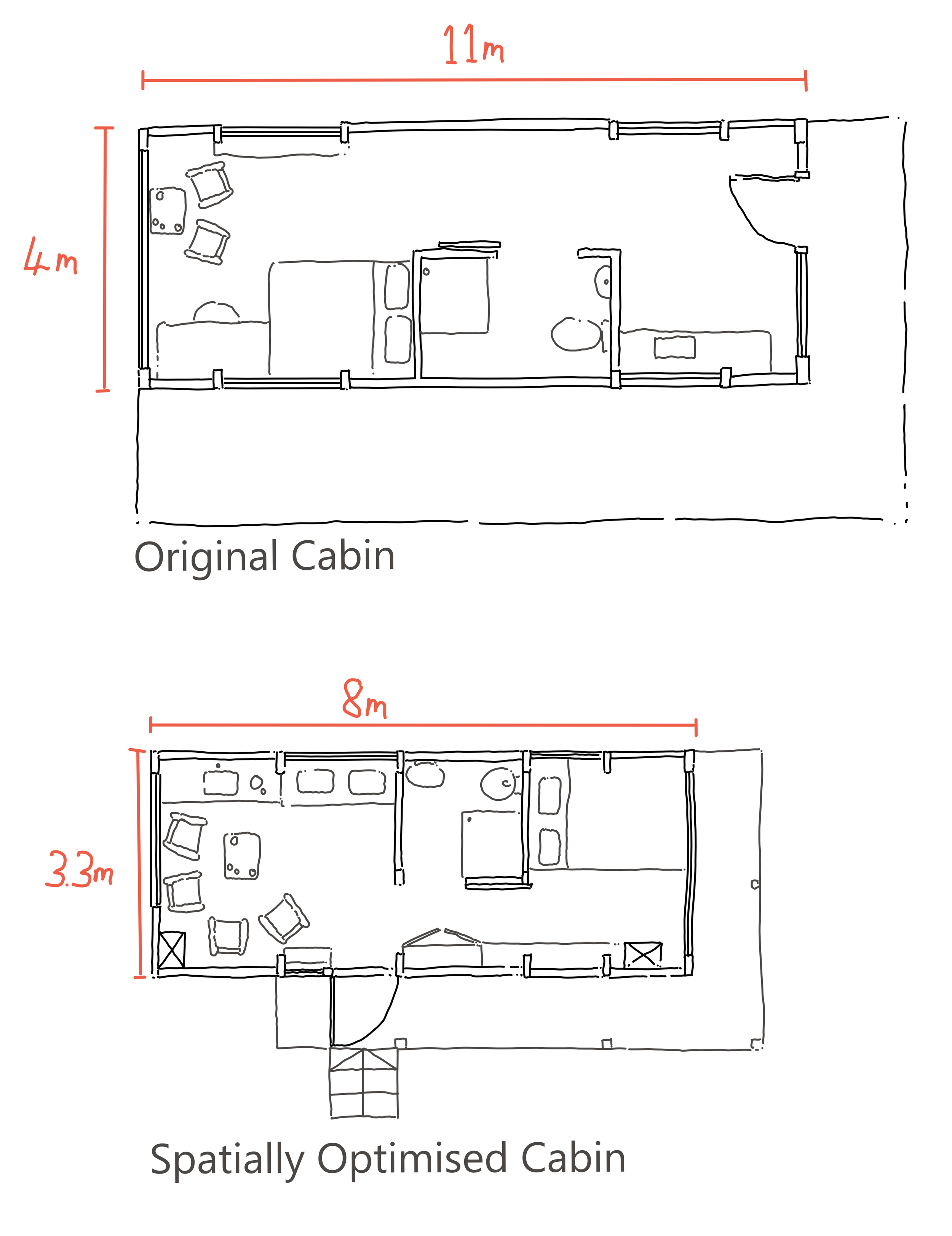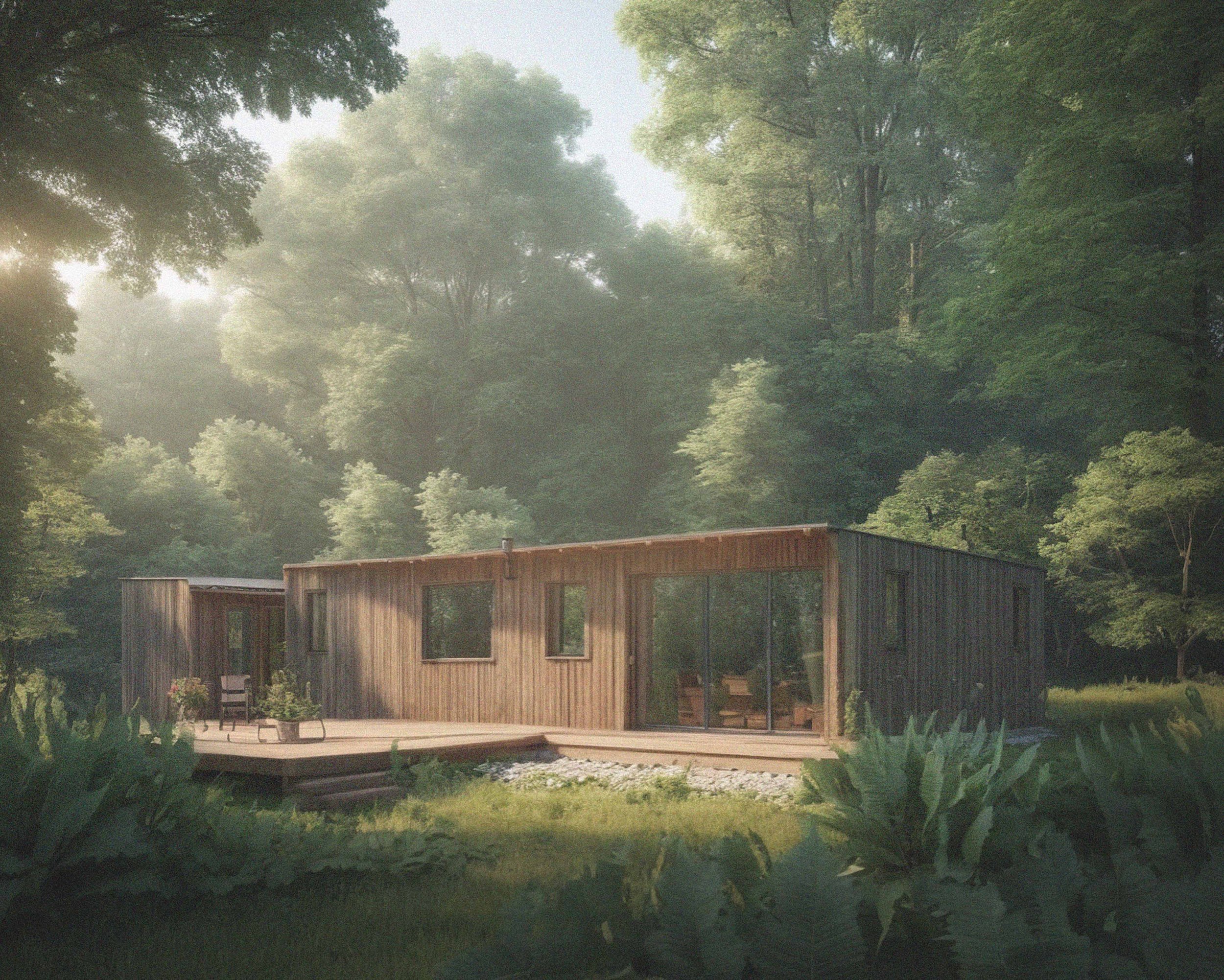How to Save Thousands on Your Self-Build: Tips from a RIBA Chartered Architect
We help Maximise Your Rental Income with Eco-homes and Luxury Holiday Homes, provided by RIBA Chartered Architects.
Practical Strategies That Don’t Compromise a Self-Build’s Quality
Want to save money on your self-build—without cutting corners? This guide shows you how to reduce costs through smart design, material choices, and better planning.
But cutting costs doesn't mean cutting corners. The smartest savings often come from designing efficiently, choosing natural materials, and managing the process with care.
In this article, we'll share proven ways to reduce your self-build costs—without sacrificing design, durability, or long-term value. From space-saving ideas to better material choices, these strategies come directly from experience as both architects and self-builders.
Quick tip: Cutting just 1 metre off your building’s length could save over £25,000—without reducing comfort or quality.
1. Design Only the Space You Need
One of the most overlooked yet effective ways to save money in a self-build is to focus on designing the space you need—no more, no less. In my experience, this is one of the smartest cost-saving measures. I’ve seen countless projects, particularly luxury homes, where there is an unnecessary excess of space. Whether it’s an oversized lounge or more bedrooms than will ever be used, these additions can inflate the budget with little benefit.
I understand the reasoning behind this: when you’re extending or building a home, there’s a fear that you might regret not having enough space down the line, so you opt to add a little more. However, when it comes to self-built homes, for example, most guests prefer intimate, functional spaces that are well-designed and practical. More often than not, the quality of space trumps quantity.
Let’s take a simple scenario. Imagine you’re building an eco-home that’s four metres high, 11 metres long, and 4 metres wide. This project might cost you around £111,000. For delivery, you’d need an escort from the factory to the site, costing an additional £6,350. Now, let’s say you decided to scale the project down—reducing the height to three metres, the length to 8 metres, and the width to 3.3 metres. This seemingly small change can cut the cost of the build by around 23%, bringing it down to roughly £85,750. What’s more, you no longer need an escort for delivery, reducing that cost from £6,350 to £2,150. So overall, the project becomes cheaper without sacrificing much, if any, functionality.
In this scenario, you’ve shaved thousands off the overall cost without sacrificing much in terms of function or experience. The eco-home becomes more intimate but also spatially efficient. And what's more, other costs drop too—your energy bills will be lower, and overheads like maintenance are reduced.
An example of how reducing the size can become more spatially efficient, without reducing the quality of the space.
2. Material Matters: Think Long-Term, Not Just Low-Cost
I was chatting with my dad recently about a project, and he raised a perfectly reasonable question: why did I specify lead flashing instead of the cheaper, easier-to-apply flashing tape? It’s the sort of query I hear a lot from clients trying to keep costs down.
And on the surface, it’s a good point. Flashing tape is quicker to install and less expensive upfront. But there’s a catch—longevity. Lead flashing, while pricier and more labour-intensive, can last over 100 years. Flashing tape, by contrast, tends to degrade after 10 to 15 years, especially when exposed to sunlight. Cracks, leaks, and repair bills tend to follow not long after.
It’s a good reminder that saving money today can sometimes mean spending more tomorrow. Opting for durable materials may feel like a bigger commitment upfront, but over the life of the building, they often deliver better value, fewer problems, and peace of mind. When it comes to your self-build, it pays to think long-term.
If you're interested in reading more about natural materials why not read our article, Top 5 Natural Materials for Your Home
3. Source What You Can Yourself
An often overlooked strategy for reducing construction costs is sourcing materials yourself. While many contractors prefer to manage procurement, taking the time to research and purchase some materials on your own can lead to significant savings. By shopping around and avoiding mark-ups from suppliers or contractors, you can get the same high-quality materials at a lower price. It's worth considering for items like finishes, fixtures, or even timber, where small price differences can add up over the scope of a whole project.
Additionally, timing your purchases right can also help. Many suppliers offer seasonal discounts or bulk deals, so planning material purchases well in advance can result in considerable savings. The key is to balance cost with quality and ensure that your materials are sourced in alignment with your project schedule to avoid unnecessary delays. This approach, combined with thoughtful planning, can result in substantial savings without compromising the integrity of your build.
A project we are currently working on that aims to be spatially optimised. Shipping Container Living.
4. Plan Energy Efficiency from the Start
Another significant way to reduce costs in the long run is by prioritising energy efficiency right from the design phase. While it may seem like an upfront investment to add higher-quality insulation, energy-efficient windows, or even renewable energy systems like solar panels, the savings can be considerable over time. A well-insulated home, for example, will require far less energy for heating and cooling, slashing energy bills and reducing the environmental footprint of the building.
Moreover, these energy-efficient solutions can enhance the comfort and functionality of the home without increasing the overall square footage. Technologies such as underfloor heating or smart home systems can ensure that energy is used only when and where it’s needed, optimising your build for both comfort and cost-effectiveness. In some regions, you might even be eligible for government grants or incentives for adopting energy-efficient practices, further reducing the financial burden of these investments.
5. The Importance of Good Project Management
One of the key factors in keeping a self-build project within budget is strong project management. As explored in the book How Big Things Get Done, effective management can be the difference between a project running smoothly or spiralling out of control. Poor planning and execution often lead to cost overruns, delays, and unexpected problems that eat into your budget. Successful projects, on the other hand, are those where every detail is meticulously planned out, and timelines and budgets are rigorously adhered to. A good project manager will break down the build into clear, manageable phases, ensuring that each phase runs on time and within the set financial parameters. Project management is not only dependent on a good project manager or Architect; it also requires competent contractors. Your architect should be able to advise you on contractors that can help with your project. To learn more about the project process from start to finish, you can read our article How to Use RIBA Plan of Works for Small Projects.
6. Conclusion: Build Smart, Not Just Cheap
In the world of self-build, cutting costs can be done in many ways, but not all methods are created equal. While some focus on trimming contractor fees or opting for cheaper materials, the most impactful savings often come from designing the right amount of space and selecting durable, long-lasting materials.
Before you start cutting corners, it’s worth considering where those choices might lead in the long run. Opting for quality materials like lead flashing and ensuring every square metre serves a purpose will help you avoid unnecessary costs in the future, leaving you with a home that not only meets your immediate needs but also stands the test of time.


